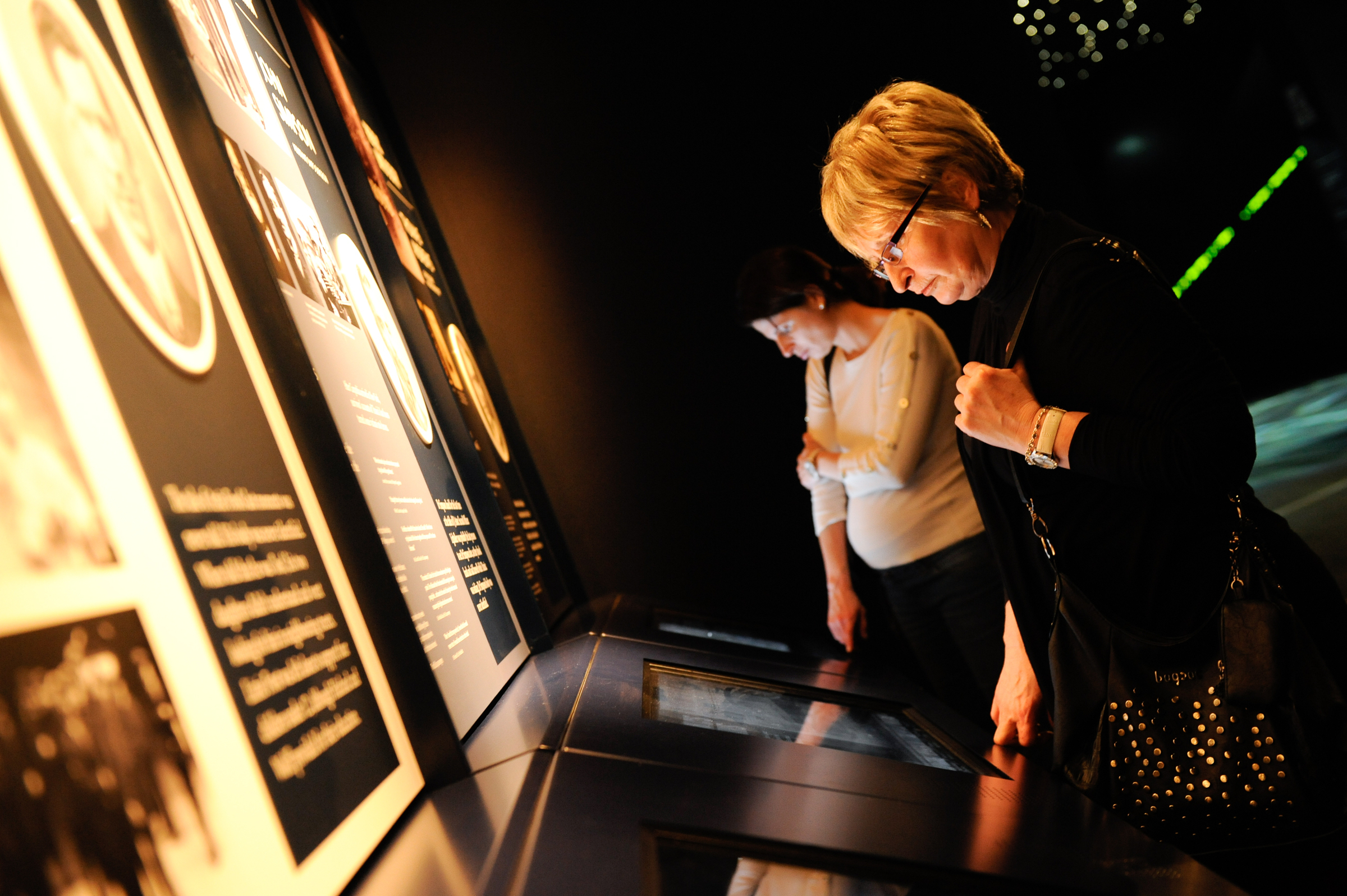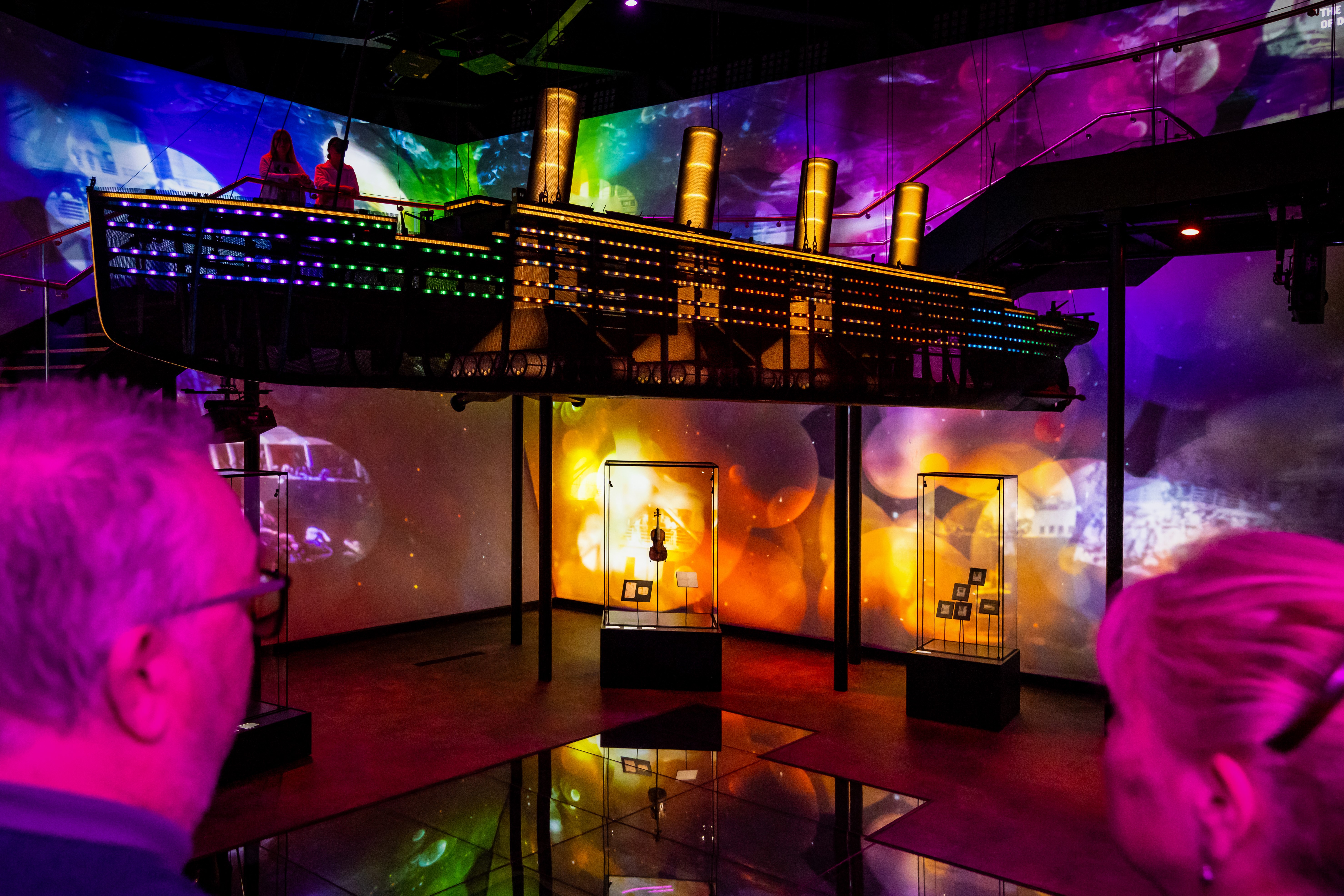In the ongoing series, read the stories of the people who designed, built and sailed on the Ship of Dreams.
This is one of many personal stories recounted as part of the Titanic Experience.
Roy Truman, is the great-grandson of Elizabeth Smith, first cousin of Captain Smith.
He recently travelled to Titanic Belfast with his family and shared the story of how his connection was discovered thanks to a presentation mug linked to his family.
Despite Elizabeth never discussing her connection with Captain Smith following RMS Titanic’s sinking, there had been suspicions within the family over the years but without any confirmation.
Captain Smith’s father Edward and uncle, George were potters in Hanley Staffordshire. His Uncle George had nine children, the eldest, Elizabeth Smith was born in 1855 and followed them both into pottery and her first husband, Mark was a descendent of two of the most famous families in the Staffordshire pottery industry, the Masons and the Spodes.
Having settled in Grimsby, by 1889 Elizabeth had five children and following Mark’s death in 1891, Elizabeth went on to marry fisherman George Johnson. They had two children George in 1893 and Lillian ‘Gertrude’, Roy’s grandmother, in 1895.
Coming from a long line of fishermen, Roy understands Elizabeth’s superstition in not discussing her connection with Captain Smith following Titanic’s sinking.
Thankfully she did keep little clues, including a Spode presentation mug.
As a student, Roy studied a Fine Art Degree in North Staffordshire and trained as a sculptor. Unbeknownst to him he lived in Stoke-on-Trent and his college was a short distance from the Spode factory and his accommodation was within close proximity to Captain Smith’s memorial.
On a visit home, his grandmother, Gertrude, showed him a mug and asked if he could re-paint the lettering. Understanding the intricacies of dealing with the unique piece of pottery he declined but having deciphered the inscription it allowed him to discover the provenance of the mug.

On contacting the Spode Museum to seek more information, he was surprised how excited they got about the mug. Gertrude decided, if the museum wanted it, it would be best for the family to donate the mug to them and the museum was delighted.
Roy explained, “They provided first class rail tickets for her and my aunt, met them at the station in the company Rolls Royce, gave them a guided tour, official presentation ceremony and a lavish lunch.
And there it sat for thirty years until I got a call from the museum asking I the Mason Pottery Collectors archivist, Ernie Luck, could contact me for information. It was he who did the research on the Smith family and explained the relationship between my great-grandmother and Edward John Smith.”
Up until that point, Roy didn’t realise the significance of where his university studies took him or the industry he would end up working in, linking him to Captain Edward Smith.
As Head Ferryman, Roy is responsible for the smallest licensed ferry in UK and possibly Europe, where he lives in Suffolk. Despite only carrying a maximum of four passengers, he notes that he has to follow the same safety rules that were implemented following Titanic’s disaster. By law he must carry a buoyancy device for every person on the boat.
Roy has been involved with boats for many years having owned and renovated a number of his own which has helped his skills in modern techniques. However, he is also a volunteer boatbuilder and has undergone training in traditional techniques, mostly using axes. He is currently helping to build a full-sized replica of the Royal Burial Ship found at Sutton Hoo which measures 90 feet long by 15 feet wide and is built of oak using the methods available to the Anglo-Saxons 1,400 years ago.
Speaking of his visit to Titanic Belfast Roy said, “This was my first time coming to Titanic Belfast and it was fantastic to come and see where Titanic was designed and constructed and to hear its story.
Having lost members of my family at sea over the years, I found it fascinating the reverence shown in how the story is told in locating the wreck, it was very moving and the artefacts were displayed beautifully.”
Captain Smith
Man behind the wheel on Titanic
Edward John Smith was born in 1850 in Hanley, Stoke-on-Trent, Staffordshire.
Smith began working on boats as a teenager and entered the merchant marine in February 1867 as an apprentice in the sailing vessel Senator Weber. In 1875 he earned a master’s certificate and in 1880 he joined the White Star Line as junior officer.
Within seven years, Smith commanded his first ship and during his 40 years in the industry he commanded 18 vessels including the Majestic, Baltic, Adriatic and Olympic.

Captain Smith married Eleanor Pennington in 1887 and they welcomed their only child, a daughter named Helen in 1898.During his time serving in the 1899 - 1902 Boer War, Smith commanded troop ships in the Royal Naval Reserve, taking them to the Cape Colony.
As Commodore or Senior Captain of White Star Line, he often commanded the newest vessel in the company and was the highest paid ship’s captain in the world in 1912. With a reputation of being a skilled and experienced captain, by this time he had gained 26 years navigating the North Atlantic.
Captain Smith left his command of the Olympic, following her return from New York, to join the Titanic in Belfast, relieving first master Captain Herbert Haddock of his duties. Titanic set sail to Southampton on April 2, 1912, arriving the following day and docked until its maiden voyage.
On April 10, 1912, Captain Smith boarded RMS Titanic in Southampton for the Board of Trade muster at 8am and by 12 noon she was embarking on her fateful maiden voyage.
Find out more about the hopes and dreams of those who boarded the world-famous ship in the Titanic Experience.
THE TITANIC EXPERIENCE
The Titanic Experience is the world’s most authentic retelling of the iconic story.
The self-guided tour extends over nine interactive galleries where you discover the sights, sounds, smells and stories of the ship, as well as the people and city that made her.



